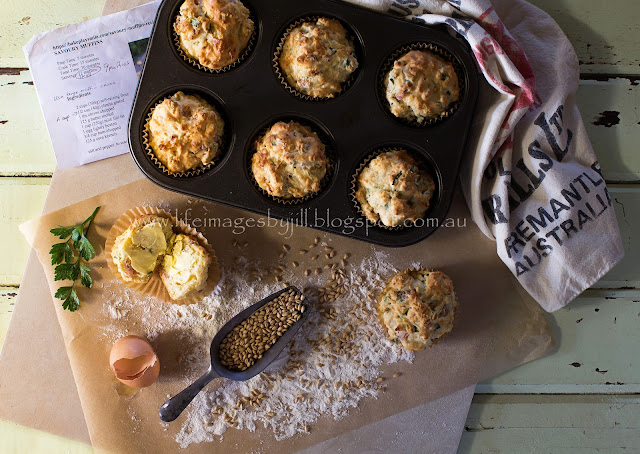Hi everyone. I hope you and yours are doing well.
During the Covid lockdown in early 2020, my husband started baking muffins once every couple of weeks. There are lots of recipes on the net. I thought I might share with you the one he uses. They freeze well and you can heat them up in the microwave for breakfast - but I suggest you take them out the night before.
This recipe came from Bake Play Smile.com/savoury-muffins
Prep time: 5 minutes Cook time: 15 minutes Makes: approx 9
Ingredients
300 g (2 cups) self-raising flour
40 g (½ cup) cheese grated
1 tbs chives chopped, fresh or dried
125 g butter melted
250 g (1cup) milk full fat
1 egg lightly beaten
100 g ham chopped
125 g corn kernels drained, or thawed (optional) salt and pepper, to taste
You could use grated carrot in place of bacon or instead of cheese and bacon use grated apple, chopped dates or sultanas.
Instructions
Preheat oven to 180 degrees celsius (fan-forced).
Place paper cases into a 12 hole muffin tin, spray with a little oil, and set aside.
Sift the self-raising flour into a large bowl. Add all remaining ingredients and gently fold through with a metal spoon until just combined.
Divide the mixture between the muffin holes,
filling cases ⅔rd's full, and bake for 15-20 minutes or until golden.
Allow to cool in the baking tin for 10 minutes
before transferring to a wire rack to cool completely.
The other day we found this recipe for pumpkin muffins
2 cups SR flour¼ teaspoon salt
½ teaspoon cinnamon and ½ teaspoon nutmeg – or use 1 teaspon mixed spice
½ teaspoon bi-carb soda
½ cup brown sugar
½ cup milk
½ tablespoon oil
1 cup cooked mashed pumpkin
1 egg
Alternatives – sultanas or other dried fruit or grated apple
Mix all dry ingredients together. Add remaining ingredients. Bake 190C for about 20 minutes
Image-in-ing
My corner of the world through my camera
Wednesday Around the World at Communal Global hosted by Randomosity.
and Little bird - Pienilintu
Thankful Thursday
Welcome to Nature Thursday

























